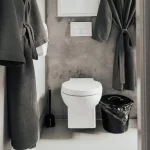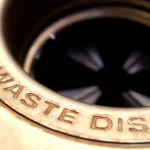We’ve all been there! That stunning oak tree in your yard has been growing for 40 years, and while it has been adding beauty and shade to your garden, it has also been aiming directly for your main drainage system. Tree roots simply love drains and sewers; they are filled with water and ready-made fertilizer, and powerful roots don’t let concrete or metal stand in their way. An annual plumbing inspection can help you spot potential problems ahead of time, and you may even be able to avoid the inconvenience and expense that comes from waiting until the roots invade the drain completely.
Check the trees
Ask your local plumber to help you identify the route of your sewer and drains. Examine the trees planted up to 10 feet on either side of the route. Research the type of tree and how big its roots are likely to grow. Check also for trees growing on public land outside the boundaries of your lot, because their roots are drawn easily to a source of free, available water. Remove problem trees and replace them with small, slow-growing species of trees that have less aggressive root systems, and check them regularly during your annual plumbing inspection. Often, a hairline crack in the pipe emits moisture, which attracts the roots towards the pipe, and only a camera pipe inspection will be able to identify the problem.
Signs of trouble
The first sign of trouble is a slow-flowing drain, accompanied by a gurgling sound in your bathtub or toilet bowl. The thicker the roots grow the more they block the pipes and act as a net to trap household waste such as fats, oils, grease, hairs and other dirt. Eventually, the roots will expand enough to crack the pipe, causing a collapse of the system and a backup of your sewer or wastewater. It’s not only unpleasant but can be extremely costly if it becomes necessary to dig up paving or remove and replace a section of your home’s foundation to get rid of the problem. A regular plumbing inspection will alert you to potential problems in time to take steps to prevent this from happening.
Preventive maintenance
If you have problem trees on your lot, some preventive steps will go a long way towards saving you money in the long term. The most important aspect is to schedule an initial plumbing inspection to find out where you stand. Once you know this, work with your local plumber to identify trees that should be removed. If a pipe inspection shows up any damage that has already occurred, find out whether pipe bursting or installation of a drain liner can be done to avoid having to dig up large sections of your garden. The new trenchless technology makes it possible to repair sections of underground piping without excavation. In addition to drain inspection, regular cleaning will also help to remove debris that could cause backups.
If you experience any of these issues, contact your local Toronto plumbers for a plumbing inspection. This will include a drain inspection using a closed-circuit camera, which will film the state of the pipes, sewer and drains and can be viewed on a computer monitor. Based on the results, the plumber will recommend the best course of action to save you money and hassle in the long run.
[…] Root RepellentCopper root repellent is a specialized drain cleaning product, which works to prevent tree roots from blocking your drains. At one time, plumbers would wrap the pipes with copper wire to repel the tree roots, but now […]







Tree root is always a problem even in concrete walls it can destroy concrete too.